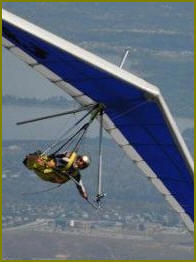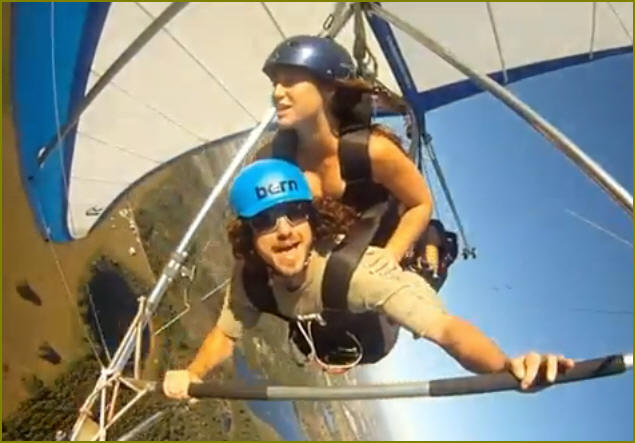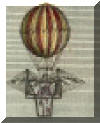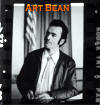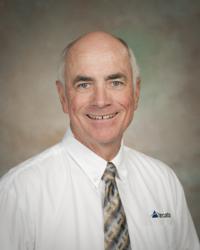|
Member Set #001 Nominate by note to Editor@UpperWindpower.com See also: Nominees for Living-Legend Lifters for people who are seen by someone as potential members of Member Set HGAusa#001
|
||
| God | God's special relationship with any and all flying, whatever such Is. | |
| Naturals |
Insects, birds, flying mammals, gliding and flying dinosaurs, Microraptor,
seeds, leaves, flakes, spiders, random combinations, dust
[Nod to early naturals was the choice of international trade name in 1975 forward: Seedwings. ] |
|
| Island kiters ancient | ||
| Chinese kiters ancient | ||
| Mythological fliers | Mercury, gods, | |
| Angels, jinns, genies, fairies. lively wisps, | Winged or flying messengers, hybrid sorts of flying ... | |
| Soaring saints from any faith tradition |
Transporting, ascenders, levitators,
teletransporters, ghosts,
Judaism: Christian: St. Joseph of Cupertino, Jesus of Nazareth, Islam: Nocturnal ascensions: "Abu Yazid also related the following. When I reached Unity—and that was the first moment that I gazed upon Unity—for many years I ran in that valley on the feet of understanding; till I became a bird whose body was of Oneness, whose wings were of Everlastingness. I kept flying in the firmament of Unconditionedness. When I had vanished from the things created, I spoke." Ref. _______: [Send your nominees:
Editor@UpperWindpower.com |
|
| Body Fliers | High jumpers, long jumpers, sprinters, hoppers, skippers, dancers, leapers, jumpers, runners, | |
| Wingers | Winged humans in play, stage acting, celebrations, dancing, praying, athletics, | |
| Fictional Fliers | Ancient, historical, futuristic+, fantasy, dreams, wishes, science fictional, anime, animation, storybook, | |
| Art-based self-soarers | Send links to your favorite art that shows self-soarers, winged beings, | |
| Para-sailors of all time |
|
|
| Manned kiters of all time |
|
|
| Aqua-kite-gliders |
|
|
| Aero modelers | Their realizations ... | |
| Yuan and Tuoba clans | They were forced to serve as hybrid test pilots. The Chinese Daoist writer Ge Hong (284–364 AD) wrote that kite vehicles with frames made of wood from the jujube tree had ox-leather straps "fastened to returning blades" that could allow the device to soar high into the air. As a form of execution, the notoriously cruel Emperor Wenxuan of Northern Qi (r. 550–559) had members of the rival Yuan and Tuoba clans attached to kites and launched from the top of the Tower of the Golden Phoenix in the capital, Ye, China, as test pilots; Yuan Huangtou (d. 559) glided for a while and survived the landing, but he was executed shortly after. | |
| Abbas Ibn Firnas | AIF1 AIF2 AIF3 | |
|
Eilmer of Malmesbury of England Eilmer of Malmesbury (also known as Oliver due to a scribe's miscopying, or Elmer |
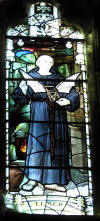 Early hang glider monk.
What? When? Churchman Eilmer of Malmesbury in 1010 was forbidden to
continue work on his gliders by his Abbot after breaking both his legs. Early hang glider monk.
What? When? Churchman Eilmer of Malmesbury in 1010 was forbidden to
continue work on his gliders by his Abbot after breaking both his legs.
NEED further information; all are welcome to research this and other instances of flying. Main article snapshot from February 18, 2009. What order of monks? Do they have records? |
|
| Archytas | and his The Pigeon ( Peristera) | |
| Leonardo da Vinci | Flying machines. Harness. Triangle control frame. Pendulumed pilot. Observing gliding objects. Man-powered aircraft. Parachute. Article1 | |
| Hezarfen Ahmet Celebi |
Hezarfen Ahmed Celebi Simine Short, Turkey, October, page 3, 2003, Soaring magazine. [ We are searching to see if Richard Miller was editor or not at that issue's time.] A similar treatment is shown here: "Hezarfen Ahmet Celebi the most famous Turkish flyer, inspired by the studies by Leonardo Da Vinci and with some corrections and balancing adjustments, derived from studying the eagle in flight, finally, after nine experimental attempts, gave shape to his wing apparatus. His flight took place in 1638 from the 183 foot tall Galata Tower near the Bosphorus in Istanbul, during the reign of the Turkish Sultan Murad IV. The flight was successful. Hezarfen Celebi landed on the other side of the Bosphorus. With this success Hazarfen proved to be 200 years ahead of his time since it was two centuries later that comparable developments took place elsewhere. The event is recorded by writer and historian Evliya Celebi (traveler), an eye witness to the feat, in his book Seyahatname (a book of travel). The word Hezarfen means expert in 1000 sciences, in-fact, a reward of 1000 gold pieces was given to Hazarfen for his achievement." From Dr Metin Gungormus. Some people are analyzing the flight. One needs know the width of the river at the time of the flight. |
|
|
TEMPORARY RESEARCH NOTE: ""(1)
George Cayley's gliders made two very short manned flights (but Cayley did not pilot). Who did pilot the Cayley gliders? .
|
||
| General Resnier
of Goue
Andre-Guillaume Resnier |
Andre-Guillaume Resnier "General Resnier of Goue, the Frenchman who in 1806 at the age of 77 became the world's first hang glider pilot [Ed: THIS IS DISPUTED] by launching himself from the ramparts of Angouleme, some 250 ft (76 m) above the River Charente. His first flight rewarded him with a ducking in the Charente and his second with a broken leg, but the point had been made. Others had simply managed to fall slower with their machines than without them, but Resnier was almost able to control the course of his second flight - and it was a flight, not just a fall." Ref> BMAA "In 1806, its first test of flapping flight success was not crowned. Springing parapet of Beaulieu, it jumps into space by agitating the wings in wire covered with waxed taffeta. It does nothing but descend rock in rock. The second attempt is worth to him a bath forced in the Charente. Left the bridge, high 5 meters, connecting the district Saint-Cybard to Angouleme, it falls into water at the end of 50 meters from vol. Finally its third and last test are a success. He traverses 300 meters by springing top of the ramparts of the city and breaks only one leg on arrival. He dies in Angouleme on February 2nd 1811. " Ref>
Andre-Guillaume Resnier "Français André-Guillaume Resnier. High resolution photo 3.5 mb. >>PlaqueResnier |
|
| Albrecht Ludwig Berblinger |
(June 24, 1770, Ulm – January 28, 1829, Ulm), also known as the Tailor of Ulm, is famous for having constructed a working flying machine, presumably
a hang glider.
Wiki
See: later-age artist's work; notice the hang glider launch ramp. |
|
| Jakob Degan
1809 Balloon launch of manned flapping and gliding machine with control frame? |
No less than Sir George Cayley noted data bout Jakob Degan's raising
himself in the air. James Means put his own name behind publishing
Cayley's note about Degan's flight. The raising may have been with
ornithopting. .Degan was a watchmaker in Vienna,
Austria. The publication Nicholson's Journal in its October 1809
issue [computed by Means publishing of Cayley's "last month" in November
1809 issue of the same journal] noted Jakob Degan's story enough to
pointedly catch the attention of the thoughtful and flight-concerned
experienced George Cayley. So, we seek more information about
Jakob Degan's aerial success. And raising himself in the air before others
have done so, and so such in a way that would catch Cayley's attention,
must count as something big in the modern history of flight; it would be
deeply unfair to compare Degan's success to what would occur 100 years
later. But it appears that Degan flight helped to turn heads....and speed
Cayley's bringing together Cayley memoranda into the light sooner
than later. So, special double hats off to Degan for his own doings,
his getting some published note, and then to turn the Cayley head and hand
so that we got the Cayley notes. And nearly simultaneously we the the
treatise by Walker. The three of them seem to have cinched the opening of
modern winged aircraft. The confidence of Cayley and Walker finally was
valid ...and confirmed by the flowering of modern aviation that developed
from the seeds of Leonardo da Vinci and into the reality of the valid
steps by Degan, Cayley, and Walker. The stream or trunk of valid
directions and working principles were then visited by others throughout
the 1800s and 1900s giving gliding, soaring, and powered flying its vast
harvest. The starts are so very important; they gave us platform for
a thousand and more furtherings. Even today, we continue to innovate
upon their shoulders. Here is an important comment: "A print commenting on
the experiments of the Swiss clock-maker. Jakob Degan. Between 1806 and
1817 Degan made repeated flights with his ornithopter dangling beneath a
balloon. Some other experimenters, notably George Cayley, read accounts of
Degan's exploits and assumed that the man had flown without the balloon."
from Here at
NASM But one is to explore the opening of
release and gliding between any flapping. Some links related:
|
|
| Jan Wnęk | The Kraków Museum of Ethnography in Poland claims that in 1866, painter and carpenter Jan Wnęk completed construction of an ash wood glider frame which he covered with linen impregnated with varnish and that Wnęk was firmly strapped to the glider by the chest and hips. It is claimed but not verified, that Jan Wnęk made several public flights from the local church tower during 1866-1869. | |
| Sir George Cayley |
Pendulum weight-shift gliding control.
See flying replica. His governable parachute had the mechanical foundations for hang glider and stiffened or framed flexible-wing hang glider. Cayley profoundly discussed and modeled pendular control of hung-massed gliders.
J. A. D. Ackroyd, "Sir George Cayley: A Bicentennial Review," the 46th
Cayley Lecture, Royal Aeronautical Society (London: RAS, 19 April 2000). |
|
|
William Samuel Henson |
||
| John Stringfellow. |
[ [ ] Has anyone
named a modern project HG after John Stringfellow?] Ariel.
Aerial Steam Carriage. What had he done with power-off gliding of his models?
Chanute sketch a Stringfellow triplane in Chanute's book Progress in Flying Machines. |
|
| Félix du Temple de la Croix |
Félix du Temple
de la Croix
http://en.wikipedia.org/wiki/File:1857DuTemplePatent.jpg + The du Temple Monoplane was a large aeroplane made of aluminium, built in Brest, France, by naval officer Félix du Temple in 1874. Did anyone sans the engine and try the design as just a glider? |
|
| Alexander Mozhaysky |
Wiki.
Alexander F. Mozhaiski of Russia. Seems some influence from Henson??? Did the Russian group do some smaller-sized gliding experiments? |
|
| Alphonse Pénaud |
Alphonse Penaud planophore AoA of tail horizontal was negative ...different from the Cayley. This Penaud was an advance. Penaud also reached having the CG slightly forward of the main-wing CL when having the rear tail with the negative AoA. Though Cayley was somewhat satisfied with his CG aft of CL and positive AoA of rear tail, such missed the large advance that Penaud gave to us with longitudinal stability and balance with the CG forward of CL with AoA of rear tail negative. Some thus hold Penaud as one of the very tall figures in aircraft design: Cayley, Penaud, Wrights ... Planophore |
|
|
Jose Weiss
|
Joseph Vincent Nicholas Francis Weiss He was getting very much right via bird study, modeling extensively large, and much testing. Thick root airfoil, washout, longitudinal balance on flying wing, shock-absorbing A-frame wheel-basebar. |
|
| Handley-Page |
FHP1
FHP2
FH3 FH4 FH5 Hyphen in name or not? Some influence from Weiss. Also carefully studied birds. A Type C illustrated some strong advances that included the washout, double surface, thick wing root, A-frame, shock-absorbing basebar, anti-beaking skid, elliptical LE. Large press for power. But he did a glider first. Have fun with Sir Frederick Handley-Page. |
|
| 1905 pilot | Life Magazine photo file of pilot hanging by arms and weightshiting. (not motored, not parallel-bar) [Editorial speculation: is the photo of a foot-launch pre-Ellehammer?] Image | |
| Thomas Walker |
He published a work on ornithopters in 1810, then
FHP1his interests
switched to fixed-wing aircraft. Title:
The
Art of Flying has been reproduced in the Aeronautical
Classics series published by the Royal Aeronautical Society. Image?? [The modern-day commentator may be too quick to discount the possibility of some hang gliding flight from Walker's drawing. Some fun effort might be done on this matter. ] Full book and full title: A Treatise upon the Art of Flying by Mechanical Means In 1831, Walker proposed a tandem-wing craft with the propulsion system between the two wings. One is to explore John J. Montgomery's tandem wing glider. And it is to be questioned if Samuel Langley was influenced by Walker. |
|
| F. H. Wenham | AERIAL LOCOMOTION. By F. H. Wenham, Esq. 1866 | |
| Mouillard |
|
|
| Otto Lilienthal
and brother Gustav Lilienthal |
Engineers, inventors, test pilots, serial manufacturer of commercial hang
gliders, curved ribs, control frames, beaking protector shock protector
(neglected on his fateful 2000th flight), foldability, portability, base
jumper pioneer, hill builder, hilltop hang glider storage, test pilot,
efficiency sculptor, promoter and exhibitor and practitioner of modern
sport hang gliding, sharer, communicator, leader, inspiration source, and
much more...
|
|
| Percy Pilcher |
Percy S. Pilcher. Percy
Sinclair Pilcher. Pilcher Tri-Plane. Beetle. Hawk. 1895 Bat. Article1. Some key Pilcher-Lilienthal notes. |
|
| Clement Ader | ||
|
Horatio Phillips of Britain |
HP1 HP2 HP3G HP4imges | |
| William Avery |
William L. Avery.
1896 test hang glider pilot. Assistant to Mr. Chanute. Article1. Image1. Article2. Want to expose hang gliding to the world? The huge slated 1903 Exposition that occurred late ...and became the 1904 huge Exposition (12,000,000 visitors) in St. Louis, Missouri, featured the hang gliding of William Avery in a biplane hang glider. Such exposure seeded hang gliding in the minds of people of young and old alike. Abstract. |
|
| William Paul Butusov aka: Mr. Butusov | 1889c-1896c hang glider test pilot William Paul Butusov | |
| Augustus Herring |
Augustus M. Herring
1895c hang glider test pilot. Thirty-six years of aviation service.
Article1. D:1926 at age 59.
Article2.
Undaunted soaring aeronaut (usa) ...Herring returned to the dunes with a triplane. |
|
| Sir Hiram Stevens Maxim |
Public interest builds when public rides "Flying
Machine." ImageA ImageB |
|
| John Joseph Montgomery | "aeroplane" word invented. | |
| Mr. Lavezzari | France at beach: 1904 | |
| Reinhold Platz | ||
| Samuel Franklin Cody | ||
| Octave Chanute | ||
| John William Dunne |
|
|
| M ? | First decade of 1900s | |
| Jacob Ellehammer |
Flying Machines.
We seek data on power-off glides.
The Ellehammer Semi-biplane was a pioneering aircraft flown in Denmark in 1906. See replica. He had a monoplane followed by a semi-biplane. "its pilot's seat, as in the previous model, "swung like a pendulum to maintain longitudinal stability." Henry Villard in his Contact! |
|
| Lawrence Hargrave | Inventor. Gliders, kites, powered aircraft. Leader. | |
| Gustave Whitehead | aka: Gustav Whitehead, Gustave Whitehead. | |
|
Ferdinand Ferber Captain (Louis) Ferdinand Ferber |
Progress in Gliding; Calculations;
Step by Step, Jump by Jump, Flight by Flight.
FF1
Seeking data on his 1899 glider.
Seeking data on No. 1, 2, 3, 4. Experimenting
perseverance! "Ferber's experiments in gliding began in 1899 at the Military School at Fountainebleau, with a canvas glider of some 80 square feet supporting surface, and weighing 65 lbs. Two years later he constructed a larger and more satisfactory machine, with which he made numerous excellent glides. Later, he constructed an apparatus which suspended a plane from a long arm which swung on a tower, in order that experiments might be carried out without risk to the experimenter" A History of Aeronautics by E. Charles Vivian XII. The First Years of Conquest. |
|
| Carl Bates | aka: Carl S. Bates Carl Sterling Bates The-Boy-Mechanic-700-Things-for-Boys-to-Do/How-To-Make-A-Glider This article following the huge Avery biplane hang glideing display to the world at the 1904 fair in St. Louis, Missouri, USA, further impacted the minds of many throughout the world as to hang gliding. Wiki. Bio. See gravestone: "Carl S. Jan 1, 1884-Aug 27, 1956 Inventor Built & Flew the First Glider in Iowa 1898" ImageGravestone. | |
| Hans Grade |
Early Aviators.
A-frame. Study clip image: Seat behind A-frame, 1910. He believed that technology must be simple. We seek full information on his steps prior to the finished powered monoplane. |
|
|
Gliding Club members of Breslau territory 1908 |
Cable-stayed triangle control frame with tethered pilot behind TCF in a battened sail hang glider as is popular today for a control airframe arrangement. The A-frame or triangle control frame that we know today on hang gliders was at least present in 1908 for hang glider control; it was then used on a battened flexible-wing hang glider, even though the pilot and craft were of very low gliding ability; nevertheless the mechanical invention was embedded then for all to use when wanted. | |
| 1905 guy |
Lift note #27: LIFE Magazine gives a lift:
http://tinyurl.com/1905inControlFrame
In 1905 hang glider pilot standing in control frame flying his hang glider. Who will be building and flying a replica of this? Who is the pilot? Hanging and feet standing in control frame. Who will modernize, power-assist, and show this gem in contemporary moments? Also, a follow-up study image http://www.energykitesystems.net//hgh/images/1905/1905study.jpg We seek a second reference to firm the historical note by LIFE. |
|
| 1908 gliding club members | Cable-stayed triangle control frame with pendulumed pilot for weight-shift of hang gliders (not the first, but at least by here in 1908 in the territory of Breslau. | |
| Gottlob Espenlaub | Strut-stayed triangle control frame for hang glider of high-aspect ratio. Also, tail-less biplane hang glider. GE1 GE2 | |
| Alexander M. Lippisch |
http://en.wikipedia.org/wiki/Image:Lippisch_biplane_glider.jpg
c.1920 Biplane Tailless Glider, c.1920. Lippisch was employed as a glider designer for Weltensegler, Inc. in Baden-Baden (1922-23); as a designer for A. G. Steinmann, Hagen, Westphalia (1923-25); and in 1925 he joined the staff of the aerodynamics and design department of the Rhon-Rossittengesellschaft, north of Frankfurt. [ Ed.: Reminds us Dunne and later Taras Kiceniuk, Jr. with his Icarus I and II, and of the following Larry Mauro machine.] |
|
| Domina Jalbert | Inventor, leader, ram-air double-surface limp airfoil inventor, glider balloons, kytoons, barrage balloons, water-kite visionary, "Brother of the Wind" kite expert, root invention for kites and hang gliders | |
| Richard Miller | Editor of Soaring Magazine in some parts of the 1960s. Heavies in SSA set boundaries ...no hang gliders in issues edited by Richard. Richard wrote a book: Without Visible Means of Support. Then he started an underground newsletter sent through the mail ...it lasted in the 1960s for six issues: Low, Slow, and Out of Control. Miller was attracted to Joe Faust's letter to the editor of Soaring magazine when--not he--Doug Lamont was the Soaring editor. Miller offered that Joe would take over the stopped newsletter; they met and Joe counter-offered with a willingness to include reprint of the six issues in one issue of a new sole proprietorship Low & Slow. RMaero | |
| Angelo d'Arrigo |
- Flew over Everest in Hang Glider. Committed to saving
birds. One of the most fascinating pilots ever! "Alla
sua morte (avvenuta nel corso di una manifestazione a Comiso, il 26
marzo 2006,
in seguito a un incidente al piccolo aereo, su cui egli viaggiava da
passeggero ed ospite d'onore) un senso di sgomento ha pervaso tutti coloro
che nel mondo lo ammiravano e lo seguivano nelle sue esultanti conquiste." Wiki |
|
| Jack Lambie | "The Streamline Man" Lambie is first tier : L.I.F.T. | |
| Stephan Nitsch | Builder, pilot, replica, Ace HG historian, master of Otto Lilienthal, inventor, generous communicator, | |
|
Alberto Santos-Dumont |
Alberto Santos-Dumont 1904 and 1905 glider ... kited over river Seine; had pontoons. Then powered flight,14-bis. Wiki. The Demoiselle.=The pilot was seated below the fuselage-wing junction, just behind the wheels. Alberto Santos-Dumont AVIAÇÃO - O Demoiselle de Santos Dumont, o Pai da Aviação. and http://www.youtube.com/watch?v=PN7p1UCU5Vo Alberto
Santos-Dumont in 1907 made and flew Demoiselle (Damselfly); then
in 1910 the world received full plans via Popular Mechanics
magazine.
July 1910 Popular
Mechanics:
|
|
| Horten Brothers | ||
| William M. Allison |
Disconnected two-beam self-inflated airfoil. Patent. ‘Polymorphic
Kite’. Breakthrough in kites. Played a major role in hang
gliding renaissance.
Patent, filing
1950
WMA1
Praise by mimic:
KP1
KP2
KP3
KP4
KP5
KP6
GeneralLIFT
Unknown to George Webster, the Allison sled invention was actually used in the hang gliding world in Venice, CA, in a hang glide flight base launch by child Joseph Faust off a lifeguard tower for a short hang glide, pictured on cover of a Low & Slow magazine. Note: Scott Sleds are a subset of the Allison sleds patented by Allison. |
|
| Waldo Waterman | Biplane hang glider. Many aircraft innovations. Bridge to hang gliding renaissance from first decade of 1900s to 7th decade; communicator, supporter, inspiration source, Seagull-Waterman Flyer, contributor to Self-Soar Association, and more. Waldo1 Waldo2 Waldo3 | |
| R. Buckminster Fuller | Tensegrity, tetrahedron, futurists, tension universe, low-mass construction, leader, inspiration source, aero cities, universal sharing, | |
| Alexander Graham Bell | Tetrahedral two lobe kite systems, communications, aviation leader and promoter, experimenter. Frost King [HGAusa historian is related to Hector P. McNeil, assistant to Bell and dedicated carpenter, model maker, and co-designer of many Bell devices. Mr. Hector P. McNeil was co-inventor for US Patent 856838 In the photo, Mr. Hector P. McNeil may be seen in photo directly below craft- with white cap facing to the right. ] | |
| Jack Wylie | Ski-tow kite master. At some power-offs and break lines: parachutal poor hang glides. Pendulumed pilot, control bar. Very low gliding, but high acrobatic manned kiting. 1958 circa. Paved way for further two and four-boom water-skit manned kiting. | |
| Ken Tibado |
His plans were widely broadcasted.
KT1
http://tinyurl.com/KenTibadoLIFTarticle |
|
| Gertrude Rogallo |
|
|
| Francis Melvin Rogallo |
Beloved Father of Hang Gliding Dies
|
|
| Bill Bennett | "Uncle Bill".
Showman, entrepreneur, promoter, friend, encourager, ornamental-patent
holder. The mechanics of his wing were strongly early presented by
Francis Rogallo and Charles Richards along with the
cable-stayed control frame and pilot position gifted to hang gliding
at least by 1908 in the gliding club in Breslau...the
same of which was revisited with tweaks by Gottlob Espenlaub, George
Spratt, Barry Hill Palmer, Mike Burns, John Dickenson, Dave Kilbourne,
Dick Eipper, and thousands of others. Bill Bennett brought a keen business
sense; he capitalized on a large extant hang gliding movement that
had been growing in the Europe and the United States. But his business was
run as a friendly family. Ornamental design (not mechanical) Patent number: D224248 Filing date: Sep 24, 1969 |
|
Volmer Jensen Leading hang glider builder and pilot from the 1940s to the 1970s.
His example and leadership inspired many to invest themselves in hang
gliding.
VJ-11
moreVJ-11 Volmer influenced three eras of hang gliding, at
least.
EAA #146198
Stark professional prototype builder.
|
||
| Klaus Hill |
|
|
| James Means | ||
| Paul Bikle | Soaring-savvy NASA leader gave the directive to build quick and cheap a stiffened Rogallo-winged hung-payloaded kite-glider for manned pilot practicing. Charles Richards took the order and fulfilled the matter within weeks followed by very many versions. He was flowering the communications leadership of NASA's Francis M. Rogallo who had demonstrated various working model hang gliders to the NASA community for years (essences of Rogallo's mechanical patents). | |
| Ryan Aeronautical Team | This team also flowered the leadership of Francis M. Rogallo. This team developed the mechanical wing that also was to be broadcasted around the world to give a foundation for recreational and commercial use of the wing. | |
| Carl Boenish | Skydive and hang glider photographer; base-jumping pioneer. Film: Playground in the Sky. Photo1 | |
|
James Hobson |
Lawrence Welk shows director brought Rogallo wing to Dockweiler Beach in
Southern California ...and gave TV air to hang gliding on the show. He had
experiments with gas powered Rogallo models---first free flight, then radio controlled--in July, 1961. He with others built a first full sized Rogallo hang glider in January 2, 1962. He built it of aluminum and with aircraft bolts. The frame was stressed with aircraft cable; however he used hardware store eye bolts and turnbuckles. Sport Aviation magazine, September, 1962. See for picture. He had kinescope and video tape of the hang glider's use in a production number on "The Lawrence Welk Show: that was aired on January 27, 1962. A second larger hang glider was taken to Dockweiler Beach; it featured the polyester film of 4 mil; reinforcement was with fiberglass tape; movies of the August, 1962 flights were made. We are seeking Jim's heirs for copies of some movies, video, and kinescope. Jim visited the Self-Soar Association office, became Otto member, subscribed to Low & Slow and also to Hang Glider Weekly. He donated his copies to Joe Greblo which are on loan to Joe Faust in 2008. He sent a notice to Ground Skimmer in 1975; his note was published in May 1975 issue of Hang Gliding magazine. Does anyone have information about the archives of Jim Hobson? Does anyone have a copy of the Sport Aviation pictures? |
|
| Igor Bensen | Tweaked the control wing into rotary aircraft. Rotary gyro hang gliding; however, he indicated in his manual that he was not recommending the kite-glider for soaring activity. | |
| George A. Spratt | Further instructed the cable-stayed triangle control frame with tensionally hung hang glider pilot for weight-shift control that had been used in earlier decades. | |
| Gottlob Espenlaub | High-aspect ratio hang gliders using the triangle control frame in strut-stay format. | |
| Dick Eipper | Colorful early So. California manufacturer, first president of the So. Calif. Hang Gliding Association, member of the Peninsula Hang Gliding Association. Barefoot Superman .. first full-color cover of a Low & Slow. | |
Bob Lovejoy Toy designer. Quicksilver designer. High Tailer designer. Worked well with
Dave Cronk. Aviation artist. Innovator. HG test pilot. High jumper.
|
||
| Irv Culver | SSA1 Aerodynamicist. Culver twist. Leading consultant. | |
| Paul MacCready, Jr. | Meta-aero engineer. Man-powered aircraft. Construction tactics. Soaring ace. MacCready Ring. Inspiration source. PM1 PM2 PM3 | |
| Orville & Wilbur |
…last name not even necessary! (Wright) Early development in true mathematical physics of aerodynamic research… Based on original design engineering, these brothers flew and soared successful three-axis control (canard) bi-wing glider. Many of their research tools are STILL used today… -i.e., wind tunnel, wing warping, hip shift control, tethered model flight, airfoil lift testing, and accurate flight logs. |
|
| Art Bean
HGAusa#044 |
Arthur Bean Many newspaper mentions in Pasadena, CA, papers.
Scores of letters to aviation people were illustrated with hang glider
cartoons. Exemplary birdman, builder of replica, multi-discipline pilot,
inspiring humorist, Bean's Bird, John J. Montgomery replica, traveling
communicator-encourager, HG cartoonist, Otto Lilienthal replica, boy shed
flyer, Neil Larson has a photo of Art Bean at the Dept. of
Water and Power meeting in early 1970s. Art won Best
Biplane Hang Glider Craftsmanship award at the May 23, 1971, Otto
Birthday Parry Meet. He traveled a great deal to visit homebuilders
to encourage them.
Classic photograph by historian Neil Larson of Art Bean at an early 1972 meeting when the USHGA was being formed. |
|
| Bob Wills | ||
| Malcolm Allison
circa 1910-1915 |
Malcolm Allison Library of Congress (LOC).
The place is Governor’s Island just off (south-east) of Manhattan across
from the Statue of Liberty. Photo 09848v shows Brooklyn across the East
River I believe. Michael Grisham
(pilot HG, HG researcher; Crestline Soaring Society
member:: thanks for your research, Michael ... nice lift for
All ... )
Bain News Service, publisher. Malcolm Allison - with glider [between 1910 and 1915] 1 negative : glass ; 5 x 7 in. or smaller. See photo. Notice that a higher resolution photo is available; also a very high tiff archival copy is available. Notice the tow lines at the wing tips. Notice also the lower wing trailing edge extension about 2 to 3 feet from the tips. Observe the firm curved airfoil format. In the two photos seen so far, a seat of any sort is not seen by Lift editors. The original New York Times article is here. New York Times: October 9, 1911, Monday, Page 4, 1241 words A text type version of the article for study is here for Lift: ====================================
|
|
| Walter Louis Briant, Jr. | Walter Louis Briant, Jr. See1 See2 | |
| Hall Brock |
Son of Pete Brock (Peter Brock of UP Products). 1975 flying in
Worlds meet: Yes, Pete Brock of UP. He showed up at the showing of The Big Blue Sky last summer. He is well, fit, and smiling. His son? Hall Brock Hall is seen flying in the vid of the Escape Country 1975 meet: http://www.youtube.com/watch?v=cSkIUgetzaw Hang Gliding Worlds 1975 Escape Country California Caption at the video: ::::""Hang Gliding Worlds 1975 Escape Country California filmed by Bob Grant while attending the first World Competition held near San Diego California. Sandy McDougal and myself drove the 2,300 miles to fly in the meet. I do have a higher quality movie if needed. The youngest ever hang glider pilot Hall Brock is shown flying from the mountain at Robinson Ranch where the meet was held and tragically Hall died a few weeks later in a hang gliding accident. There is also a segment filmed at the Saddleback Mountain take-off which is near Robinson Ranch in California. Contact me for further info at- caskydog@gmail.com "" |
|
| Rob Kells |
Meta-positive-service in commercial sector. Cornerstone to decades or
recent hang gliding community.
|
|
| Nominated for Member Set #001 | ||
| E.
Winter of Fareham of England |
||
| Halvor Garos
and Carl Messolt of New York city |
||
| Willi Pelzner | ||
| John Chotia | John Chotia: Chotia deceased since 1981 was the designer of the Weedhopper line of Ultralights. As President of Weedhopper of Utah, Chotia built and sold many designs, which have been a mainstay in the U.S. and overseas Ultralight markets. In 2002 awarded EAA Hall of Fame. | |
| Preston Watson | http://www.aerospaceweb.org/question/history/q0159.shtml | |
| Peter Bowle-Evans | Peter Bowle-Evans Leader | |
| Andy Jackson | ||
| Richard "Cabbage-head" Seymour | ||
| Jeff Craig | ||
| Ed Gardia ? or ? Ed Guardia CONFIRMATION OF SPELLING REQUESTED Search Low & Slow, Hang Glider Weekly, Ground Skimmer. Both spellings are out on Internet. Find newspaper report of the accident IN EARLY 1970s near Sylmar. | ||
| Pat Conniry | Pat Conniry (? Conniary) | |
| Ed Grauel |
d. 2002. Leader. Researcher.
EG1
EG2g
Rogallo Corner Kite Radar Reflector plans by Ed Grauel |
|
|
J.G. Hagedoorn (1912-2000) |
||
Taras Kiceniuk (Senior)
vitality status?
|
||
| Richi Meier |
Possible sprog-setting accident: Swiss top Aeros pilot, Richi Meier, died
from a tragic accident on June, 15, 2008, at the 16th FAI European Hang
Gliding championships. Too-low of altitude for reserve parachute to
be effective following a tuck or tumble occurred. His accident profoundly
deepened discussions concerning sprog settings. Richard
Meier
|
|
| Robin Strid | ||
| Eric J. Jansen, Boeing engineer, PGer, Article1 Article2 Article3 Article4 Article5 Midair heart failure. Tiger Mountain. | ||
| John Sharp | John Sharp ..."coring now the celestial thermal" ... | |
| Suzy Moyes | Daughter of Bill and Molly Moyes died July __, 2009, of a stroke. Hang gliding hospitality plus! Love to Suzy. Condolences to the entire Moyes family. http://www.moyes.com.au/ | |
| Captain Jack Carey |
“Captain” Jack Carey killed on bike on Lizard Head Longtime local struck by truck after straying into traffic By Matthew Beaudin General link for him. |
|
| Bill Vogel | Sept. 19, 2009 Ref1 Photos | |
| Fred Tiemens | 1975 | |
| Gordon Boyce | Oct. 2, 2010 | |
| Brett Snellgrove | September 2010. | |
| Dave Gibas | sky poet | |
| Lemuel Lopez Oct. 15, 2010 ??? Truck towing HG accident. OR. | ||
| Alan Chuculate |
Nov. 5, 2005, in Mexico.
|
MemoryByJeffGoin |
Nov2010ProfileTorreyHawks | M2294SDHGPA | 1st USPPA president | Wife: Mary Hobson | http://www.usppa.org/News/InMemory/AlanChuculateByJimEskildsen.jpg |
|
|
Tony Gittes Tony Gittes |
||
|
Christopher Talbot-Jones Son and Vicki
survive. Christopher passed in 2002. Son of same name.
Chris, Thomas H. Purcell, Jr. Flight Dynamics (pres: Thomas H Purcell Jr.), Raleigh NC Built flexible-wing glider. Perhaps 1961. Details are invited. Skysurfer Magazine of May/June 1973, page 9, published by the owner of Aeronautical Publishers, shows Purcell with a wing that holds the mechanical inventions embedded also in the Fleep and the wing of the team headed by engineer Charles Richards. Thomas H. Purcell Jr. died Oct. 13, 2007, at UNC Hospitals in Chapel Hill, N.C
|
||
| James Hobson, one of two known-1962 fathers of simple flex-wing recreational DIY foot-launch flex-wing hang gliding, died April 26. 2013. Formal funeral services on Otto Lilienthal's birthday, May 23, 2013. In his 90s, complications of a needed surgery. See bio in USHawk.org forum. He in 1962 put hang gliding into the EAA arena and into national television. Director-producer of Lawrence Welk Shows. Resident of Southern California. | ||
|
Guido Gerhmann, one of the most talented hang gliding pilot (he was the
1998 World champion) died in a plane crash early this month. He was 38.
May 2013. Powered plane crash. Hang gliding
champion. http://www.fai.org/civl-news/37220-guido-gerhmann-dies-in-a-plane-crash |
||
|
April 27 or April 28, 2013: Robert Downing,
aka Bob Downing This weekend, Bob Downing, long time NASA Dryden engineer of our range (telemetry and data acquisition) died after a multiyear battle against cancer. Bob was of interest to us because he was a hang gliding pioneer. He held the US Hang Glider association membership number 70. Bob was a good friend, we often shared a joke and a cup of coffee in the hall in the mornings (usually 6:45 or so, we both like to get to work early). Bob, I'm going to miss you... Al Bowers, Associate Director for Research NASA Dryden Flight Research Center Some notes about Robert Downing |
||
| 2011 Shane Smith, 23. Towing accident. | Dad laments. | Shane at the Craters | | ||
| 2006 John Freer | ||
| Jim Theis , Nighthawk http://www.twitt.org/nhawk.htm | ||
| Neil A. Armstrong, NASA FRC NA1 D.: August 25, 2012 SeeHere. | ||
|
Chanute's biography: "Locomotive to Aeromotive"
Hello, Joe:
Aug 23, 2012 |
||
| [ ] PG pilots ... See Rick Masters site http://www.cometclones.com/mythology.htm | ||
|
I am not nearly as much of a Henny
Penny as many in our
sport.
I used to tell my
students "If you are willing to crash I am willing to watch."
(No one actually took me
up on it.) Not only do I think we should all have
the freedom to fritter
away our lives in any foolish manner we wish,
but I find generally
most intelligent folk like you are little inclined
to hurl yourself
thoughtlessly into oblivion. And no, I do not advocate
putting a site at risk.
If you want to kill yourself please do it somewhere
where it will have no
adverse affect on others. If on the other hand
you want to carefully
evaluate some wing from the past in a methodical
and careful manner, as I
bet would be your inclination, then I can even
suggest places where
that can be done. I may have to have you sign a waiver though!
~ Ken de
Russy (November 17, 2011)
|
||
